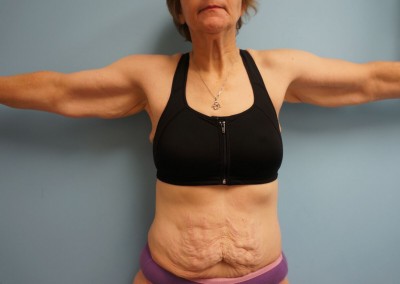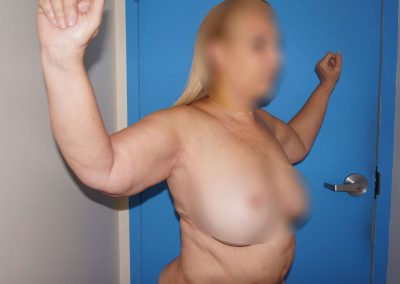 Arm Lift
Arm Lift
Also known as brachioplasty
An upper arm lift, or brachioplasty, reshapes the upper arm to tighten loose skin and remove fat that often creates a “bat wing” appearance under the arm. Removing the excess skin caused by weight loss or natural aging can tighten loose skin that extends from the underarm area to the elbow; liposuction is sometimes used in combination to achieve the best results. Every year, thousands of people undergo successful upper-arm-lift surgery and are pleased with the results. There are various ways of doing a brachioplasty, a short scare in the posterior aspect of your arm, an extended incision into the axial, and scarless! The technique used will depend on your specific anatomy.
When to Consider an Upper Arm Lift
- If your weight is normal, but you feel your shape is marred by underarm laxity.
- If you have lost a massive amount of weight and are left with excess upper-arm skin and fat that may resemble bat wings.
- If you are willing to accept a scar in exchange for shapelier arms.
Considerations
Pros
- You will look much better in form-fitting clothes.
- You will have increased confidence and a better self-image.
- You will be able to wear short-sleeve or sleeveless clothing without feeling self-conscious.
Cons
- You will have visible scars along the insides of your arms, extending from the armpit to the elbow.
- If your sagging under arm skin is not excessive, an upper arm lift may not be worth the resulting scars (in this case, consider limited-incision brachioplasty or liposuction).
- Your surgeon will not be able to predict exactly how your scars will look.
These are the top three pros and cons to weigh when considering an upper arm lift. If you want to focus on what is unique to you, please consult with your aesthetic plastic surgeon.
Are you a good candidate for an upper arm lift?
After losing a significant amount of weight and embarking on a program of vigorous exercise, you may find that you still have loose, hanging underarm skin that resembles bat wings. Although you can improve your upper-arm appearance with exercise, this redundant underarm skin remains a problem that does not improve with exercise. The following are some common reasons why you may want to consider an upper arm lift:
- You have lost the weight you desire, but are left with redundant underarm skin.
- You are an adult with significant upper arm skin laxity due to aging.
- Your weight is relatively stable and you are not significantly overweight.
- You are a healthy individual with no medical conditions that could impair healing or increase surgery risks.
- You are a nonsmoker.
- You are committed to a healthy diet and lifestyle.
If you are in good general health, have a positive attitude and realistic expectations, you are most likely a good candidate for this procedure.
Detailed Procedural Info
How is an upper arm lift procedure performed?
Generally, here is what to expect:
- Your surgeon will create markings on your elbows, arms and armpits (if you need incisions). The location, length and direction of these incision lines will be dictated by the type of brachioplasty you will undergo.
- You will receive either intravenous sedation or general anesthesia, based on your surgeon’s recommendation.
- Your surgeon will make the necessary incisions to remove excess skin and fat.
- The incisions may be completely concealed within the armpits or extended down the inside of the arms in the most inconspicuous locations possible.
- Your surgeon may use liposuction as an adjunct to remove excess fat.
- After the incisions have been made, your surgeon will remove the excess skin and fat and bring the incisions together to provide a firmer and smoother arm contour.
- Finally, the skin is smoothed over the new contour of your arm.
- Your surgeon will close the incisions carefully to minimize scarring. Your sutures may be placed beneath the skin, where they will be gradually absorbed by your body.
- A sterile dressing and a compression garment will be applied and drains may be placed.
The goal is to help you achieve the best result and make your surgical experience as easy and comfortable as possible.














